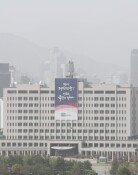Kim Gu, U.S. OSS, and Xian training base for Korean Liberation Army
Kim Gu, U.S. OSS, and Xian training base for Korean Liberation Army
Posted March. 01, 2018 07:38,
Updated March. 01, 2018 07:38
The U.S. Office of Strategic Services, the predecessor of the Central Intelligence Agency, was established in 1942. According to the CIA’s website, President Franklin Roosevelt put Gen. William J. Donovan, a World War I hero, in charge of forming a wartime intelligence service after the United States joined World War II. That gave birth to the first U.S. spy agency that combined intelligence activities conducted by various departments of the executive branch, including the State, Treasury, Navy and War Departments.
Kim Gu, the last premier of the Provisional Government of the Republic of Korea, established the Korean Liberation Army (KLA) in 1940, headquartering its three branches in Chongqing, Xian and Fuyang in China. The KLA secretly pursued the Project Eagle, operations promoted by the Korean Provisional Government and the Office of Strategic Services (OSS) for penetration of the Korean Peninsula. On Wednesday, The Dong-A Ilbo reported on the training base of Joint Eagle in Xian, Shaanxi province of China, verifying, for the first time, the site where young Koreans who aspired their homeland’s independence from Japanese colonial rule received hard and special military training.
On August 7, 1945, Kim Gu met with OSS Director Donovan to draw up a detailed plan to penetrate into the Korean Peninsula and agreed on a joint military operation against Japan. The plan involved elite KLA troops who received secret training getting aboard a U.S. submarine in the Shandong Peninsula for penetration in to the Korean Peninsula to conduct various disturbance operations as a member of the Allies. The root of the South Korea-U.S. military cooperation and joint exercises traces back to the era of Korea’s Provisional Government. Unfortunately for Korea, Japan surrendered before the joint operation began, resulting in Korea not being recognized as a World War II victor. Kim Gu lamented that years of dedicated preparations for joining the war had gone down the drain.
Kim gave his calligraphy of a message calling for friendship and equal cooperation with the U.S. to Gregory Henderson, a commercial cultural of the U.S. Embassy, in January 1949, indicating that Kim paid special attention to strengthening ties with the United States after Korea’s liberation and sharply pointed out the future direction for Korea. South Korea should inform China of the meaning of the Xian training base and draw up measures to maintain the site.
mskoh119@donga.com







